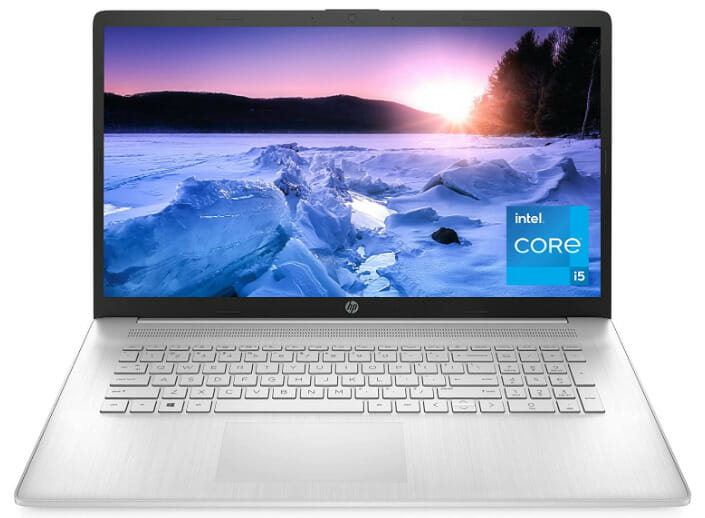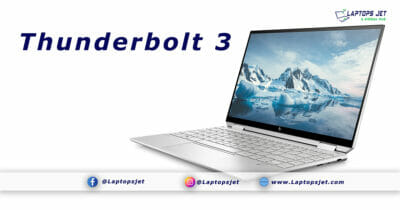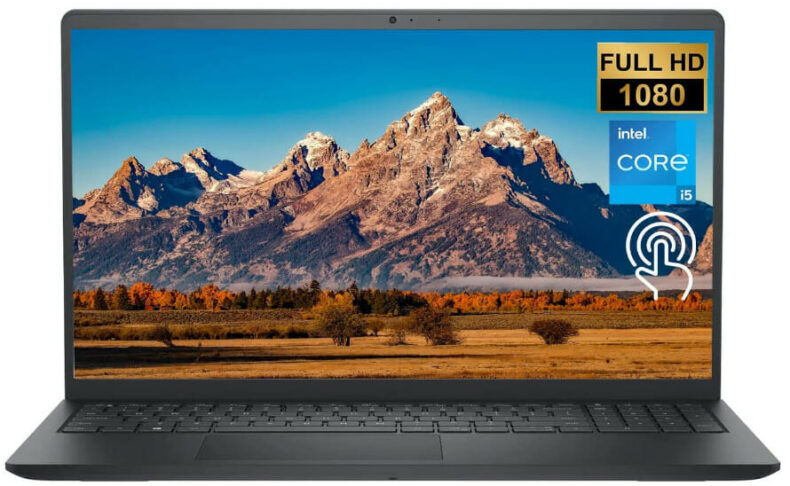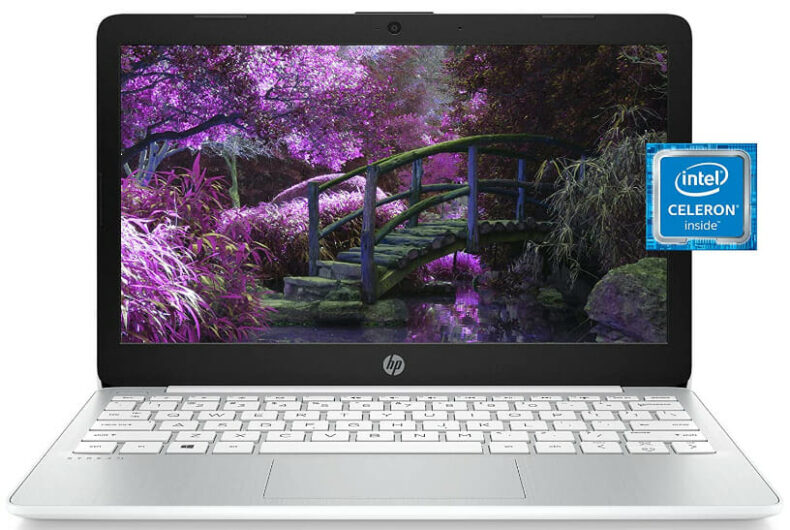Best Laptop for PLC Programming

In the ever-evolving world of industrial automation, the demand for efficient control system programming solutions continues to grow. Professionals in this field require a powerful computing device that can handle complex algorithms, real-time data processing, and seamless communication with programmable logic controllers (PLCs). Discover the ideal tool that can empower engineers, streamline processes, and drive innovation in the realm of control system programming.
Introducing the Exemplary Computing Companion: a cutting-edge device meticulously designed to meet the exacting needs of PLC programming enthusiasts. This state-of-the-art gem flawlessly combines unrivaled performance, exceptional reliability, and unmatched versatility, making it a standout choice for professionals seeking unparalleled precision and efficiency in their work.
Engineered to handle the intricate demands of control system programming, this remarkable computing device boasts remarkable processing power, enabling effortlessly smooth multitasking and lightning-fast execution of complex algorithms. With its robust architecture, this potent instrument pushes the boundaries of computational speed, enabling programmers to tackle the most sophisticated challenges with ease.
Choosing the ideal laptop for PLC programming
When it comes to selecting the perfect device for PLC programming, there are several factors that need to be considered. A suitable laptop plays a vital role in ensuring efficient and effective programming operations for programmable logic controllers. In this section, we will explore the key considerations to keep in mind when choosing a laptop for PLC programming, without using the commonly associated words.
- Performance: The performance of a laptop is of utmost importance when it comes to PLC programming. The device should possess the processing power, memory capacity, and storage capabilities required to handle complex programming tasks without any lag or delays.
- Reliability: Reliability is a critical aspect of any laptop utilized for PLC programming, as it directly impacts the stability and dependability of the programming operations. The laptop should be durable and able to withstand long hours of continuous usage.
- Compatibility: Ensuring compatibility between the laptop and the PLC software is essential to avoid any compatibility issues or software conflicts. It is crucial to choose a laptop that supports the required operating system and software versions.
- Connectivity: The laptop should provide a range of connectivity options to facilitate seamless communication and data transfer between the PLC and other devices. Ethernet, USB, and serial ports are some essential connectivity features to consider.
- Ergonomics: Given the prolonged hours spent on programming, the laptop should have an ergonomic design and an excellent keyboard for comfortable typing. A clear and high-resolution display also enhances the programming experience.
- Battery Life: PLC programming often requires mobility, and a laptop with a long battery life ensures uninterrupted programming sessions, especially when working in environments without readily available power sources.
By considering these factors in your laptop selection process, you can ensure that you find the ideal device that meets your specific needs for PLC programming. Next, we will explore some popular laptops and their features that align with these considerations.
Key considerations to keep in mind
When selecting the ideal device for programming programmable logic controllers (PLCs), there are numerous crucial factors to consider. These aspects can greatly impact the effectiveness and efficiency of your programming tasks. Therefore, it is essential to carefully evaluate each consideration to ensure optimal performance.
- Performance:The performance of the laptop plays a vital role in PLC programming. Look for a device that offers fast processing speeds and ample RAM capacity to handle complex programming software and multiple tasks simultaneously. A powerful processor and sufficient memory will enhance the speed and efficiency of your programming tasks, allowing for smoother workflow.
- Connectivity:Connectivity is another essential consideration as PLC programming often involves working with various devices and peripherals. Ensure that the laptop has sufficient USB ports, Ethernet ports, and other connectivity options to easily connect to PLCs, HMI (Human-Machine Interface) devices, and other necessary equipment. This will facilitate seamless communication and data transfer between your laptop and the devices you are working with.
- Screen size and resolution:Considering the long hours spent programming, it is crucial to choose a laptop with an adequate screen size and resolution. A larger screen will provide more space for coding and debugging, reducing eye strain and enhancing productivity. Additionally, a higher resolution will ensure clearer and more detailed visuals, allowing for better visualization of ladder logic and other programming elements.
- Battery life:Since PLC programming often involves working on-site or while traveling, a laptop with an extended battery life is crucial. Look for a device that offers long-lasting battery performance to avoid interruptions in your work. This will allow you to work confidently without constantly worrying about finding a power source or losing unsaved data.
- Durability:PLC programming often takes place in industrial environments, which can be harsh and demanding. Therefore, it is important to select a laptop that is durable and built to withstand rugged conditions. Look for a device that has a sturdy build, reinforced edges, and adequate protection against dust, water, and accidental drops. This will ensure the longevity of your laptop and minimize the risk of damage or malfunction.
- Portability:Lastly, consider the portability of the laptop, especially if you frequently need to carry it to different work sites. Look for a device that is lightweight and compact without compromising on essential features. A portable laptop will make it easier to transport and work on-the-go, enhancing flexibility and convenience.
By carefully considering these key factors, you can choose the most suitable laptop for PLC programming that will meet your specific requirements and support your programming tasks effectively.
Understanding the requirements for PLC programming
Developing effective PLC (Programmable Logic Controller) programs requires a thorough understanding of the specific requirements involved. It is crucial to have a clear grasp of the essential elements necessary for successful PLC programming without solely relying on the consideration of the best laptop for the job.
1. Comprehensive Knowledge of Industrial Automation Processes
Before delving into the technical aspects, it is important to have a solid foundation in industrial automation processes. This encompasses understanding the principles of control systems, electrical circuits, and the operation of machinery. Familiarity with various industrial protocols and standards such as Modbus, Profibus, or DeviceNet is also critical.
2. Proficiency in PLC Programming Languages
A proficient PLC programmer must have a strong command of programming languages specifically designed for PLC systems. These languages, such as ladder logic, function block diagrams, and structured text, allow for efficient programming of PLCs to control and monitor industrial processes. Understanding the nuances and syntax of each language is essential for effective program development.
- Understanding Ladder Logic: Ladder logic is a graphical programming language that resembles electrical ladder diagrams commonly used in industrial control systems. It utilizes symbols and rungs to represent logical control circuits.
- Exploring Function Block Diagrams: Function block diagrams use graphical blocks to represent functions and their interconnections, aiding in the development of complex control logic.
- Utilizing Structured Text: Structured text is a high-level text-based programming language resembling commonly used programming languages such as C or Pascal. It allows for more advanced programming techniques.
3. Familiarity with PLC Hardware and Software
To effectively program PLCs, it is crucial to have a strong understanding of the hardware and software involved. This includes knowledge of different PLC models and their capabilities, as well as the software tools used for programming and debugging. Familiarity with the specific brand or model being used ensures compatibility and optimal utilization of resources.
In conclusion, successfully developing PLC programs requires a well-rounded understanding of industrial automation processes, proficiency in PLC programming languages, and familiarity with PLC hardware and software. By grasping these requirements, one can effectively navigate the complexities of PLC programming, ensuring the development of reliable and efficient control systems.
Hardware and software specifications to prioritize
When it comes to selecting a suitable device for PLC programming, it is important to consider a range of hardware and software specifications that will enhance the efficiency and effectiveness of your programming tasks. By prioritizing these specifications, you can ensure optimal performance and compatibility with the programming environment without compromising on your requirements.
One of the key considerations when choosing a laptop for PLC programming is the processor. A powerful and fast processor will enable you to handle complex programming tasks efficiently, ensuring smooth execution and minimizing lag times. Additionally, a processor with multiple cores can provide multitasking capabilities, allowing you to run multiple programming software simultaneously without any performance issues.
Another crucial factor to consider is the amount of RAM (Random Access Memory) in the laptop. PLC programming often involves working with large datasets and running resource-intensive applications, so having an ample amount of RAM ensures smooth multitasking, efficient data processing, and quick program compilation. A minimum of 8GB RAM is recommended for optimal performance, although higher configurations may be required for more demanding applications.
In terms of storage, a solid-state drive (SSD) is highly recommended over a traditional hard disk drive (HDD) for PLC programming. SSDs offer faster data access and retrieval speeds, resulting in quicker program loading and saving times. Additionally, they are more resistant to physical shocks, making them ideal for portable laptops, which may be subject to movement or accidental drops.
When it comes to the display, a laptop with a high-resolution screen is advantageous for PLC programming. A higher pixel density allows for better readability, especially when working with complex ladder logic diagrams or text-heavy programming interfaces. Additionally, consider a screen size that suits your preferences and working environment, whether it be a compact and lightweight option for portability or a larger display for enhanced visibility.
Lastly, ensure that the laptop is equipped with the necessary input/output ports to connect with external PLC devices. This includes Ethernet ports for communication with industrial controllers and USB ports for connecting peripherals such as programming cables and external storage devices. The availability of these ports will ensure seamless integration with your PLC programming setup.
| Hardware Specification | Priority |
|---|---|
| Powerful and fast processor | High |
| Adequate RAM (8GB minimum) | High |
| Solid-state drive (SSD) storage | High |
| High-resolution display | Medium |
| Appropriate input/output ports | Medium |
Top laptop brands recommended for PLC programming
In the world of PLC programming, having the right laptop can make a significant difference in efficiency and productivity. When it comes to choosing a laptop for PLC programming, it is important to consider reliability, performance, and compatibility with the programming software.
There are several top laptop brands that are highly recommended for PLC programming. These brands have proven track records and are known for their high-quality products and excellent customer support.
One of the top laptop brands for PLC programming is renowned for its reliability and robust performance. With its powerful processors, ample storage space, and durable build, this brand offers a solid foundation for any PLC programming tasks. Additionally, its compatibility with various programming software makes it a preferred choice among professionals in the industry.
Another top laptop brand that is highly recommended for PLC programming is synonymous with innovation and cutting-edge technology. This brand offers state-of-the-art features and advanced functionalities, ensuring seamless programming experiences. Its sleek design and lightweight construction make it ideal for on-the-go professionals who require portability without compromising performance.
A third top laptop brand that should be considered for PLC programming is known for its exceptional performance and user-friendly interface. With its intuitive design and optimized hardware, this brand provides a smooth and efficient programming experience. It also offers a range of customization options to meet individual needs and preferences.
When it comes to choosing a laptop for PLC programming, reliability, performance, and compatibility are key factors to consider. These top laptop brands recommended for PLC programming provide the necessary tools and features to enhance productivity and ensure a seamless programming experience.
Researching and comparing reliable options
In the realm of finding the most suitable device for PLC programming, it is vital to engage in thorough research and meticulously compare the available options. This process involves exploring various factors, beyond the commonly discussed features of “best”, “laptop”, “PLC”, and “programming”. By delving into the realm of reliable options, individuals can ensure they make an informed decision and obtain a device that meets their specific needs.
When embarking on the journey of researching and comparing laptops for PLC programming, it is crucial to consider not only the technical specifications but also the overall reliability and performance. While choosing the most appropriate device, factors like durability, compatibility with programming software, processing power, storage capacity, and portability must be taken into account. It is essential to prioritize these features, as they directly impact the efficiency and effectiveness of PLC programming tasks.
Furthermore, in this era of rapid technological advancements, staying up to date with the latest trends and innovations is essential. Researching and comparing reliable options involves keeping a pulse on the ever-evolving laptop market, examining user reviews, and seeking expert opinions. This comprehensive approach ensures that individuals can make well-informed decisions, considering both established brands and emerging players in the market. By staying abreast of the latest developments, one can find a laptop that not only meets their current requirements but also has the potential to adapt to future needs.
In addition to technical aspects, it is crucial to consider the support and warranty services offered by manufacturers. Reliability extends beyond the laptop itself, encompassing the level of customer service and support available. Opting for companies that are known for their responsive and prompt assistance can provide peace of mind and mitigate potential issues that may arise during PLC programming endeavors.
In conclusion, the process of researching and comparing reliable options for PLC programming laptops is a crucial step towards acquiring a device that suits specific needs. By carefully examining various factors beyond the commonly discussed features, individuals can make informed decisions that are tailored to their requirements. Keeping a finger on the pulse of the market and considering aspects such as durability, compatibility, processing power, storage capacity, and customer support ensures that the chosen laptop can efficiently support PLC programming tasks now and in the future.
Evaluating the performance capabilities of laptops
In the domain of assessing the prowess of laptops, it becomes imperative to delve into the fundamental aspects that contribute to their overall performance. By thoroughly evaluating the capabilities of these portable computing devices, one can make informed decisions regarding their suitability for various tasks such as PLC programming. This section aims to provide a comprehensive analysis, devoid of explicitly referencing labels like “best,” “laptop,” “for,” “PLC,” and “Programming,” by exploring the key factors that influence the efficiency and effectiveness of laptops in diverse professional settings.
Processing Power: One of the crucial aspects to consider when evaluating laptops is their processing power. This encompasses factors such as the type and generation of the processor, clock speed, number of cores, and cache size. A robust processor enables faster execution of complex tasks, facilitating smooth multitasking and seamless performance in demanding software environments.
Memory and Storage: The memory and storage capacity of laptops significantly impact their overall performance. Random Access Memory (RAM) plays a pivotal role in facilitating quick data access and smooth multitasking, while solid-state drives (SSDs) enhance storage efficiency and data transfer speeds.
Graphics Capabilities: In certain scenarios, laptops may be required to handle graphics-intensive tasks, such as industrial simulations or visualization of complex system diagrams. Evaluating the graphics capabilities of potential laptops includes considering the presence of dedicated graphics cards, their performance specifications, and compatibility with software requirements.
Connectivity and Portability: In today’s interconnected world, seamless connectivity is essential. Assessing the connectivity options, including the availability of USB ports, Ethernet ports, and wireless capabilities such as Wi-Fi and Bluetooth, ensures compatibility with various devices and enables efficient data transfer. Moreover, the portability of the laptop, including its weight, battery life, and construction, determines its suitability for different work environments.
Operating System Compatibility: When choosing a laptop for professional purposes, considering its compatibility with the preferred operating system is crucial. Different industries may rely on specific operating systems for their software and programming needs, and ensuring compatibility enables a seamless integration of the laptop into existing workflows.
In summary
Evaluating the performance capabilities of laptops involves a holistic analysis of factors such as processing power, memory and storage, graphics capabilities, connectivity and portability, and operating system compatibility. Accurate assessment in these areas lays the foundation for identifying laptops that can effectively support tasks such as PLC programming, without specifically focusing on the “best” or “most suitable” options.
Processor, RAM, and storage specifications for efficient programming
In the realm of computer hardware, there exist certain essential elements that significantly contribute to efficient programming. The processor, RAM, and storage specifications of a laptop play crucial roles in determining the overall performance and productivity of PLC programming tasks.
Processor: A powerful and reliable processor is vital for handling complex PLC programming tasks with ease. The processor’s speed, measured in gigahertz (GHz), determines how quickly it can execute instructions and process data. A higher CPU clock speed ensures smoother multitasking, faster program execution, and reduced lag in running applications.
RAM: Random Access Memory, commonly known as RAM, is the temporary storage space used by a laptop to store data that is currently being accessed or processed. For efficient programming, a laptop should have an adequate amount of RAM. More RAM allows for smoother multitasking, quicker program loading, and seamless switching between applications. It enables programmers to work with large projects and resource-intensive software without experiencing significant slowdowns.
Storage: The storage capacity of a laptop directly impacts its ability to store and retrieve data. When it comes to PLC programming, it is crucial to have sufficient storage space to accommodate programming software, project files, and associated resources. In addition, the type of storage, such as solid-state drives (SSD) or hard disk drives (HDD), affects the speed of data access and overall system performance. SSDs are known for their faster data transfer rates, quicker startup times, and improved durability compared to traditional HDDs.
In conclusion, selecting a laptop with a powerful processor, ample RAM, and appropriate storage specifications is essential for efficient PLC programming. These hardware components work together to ensure a smooth and productive programming experience. It is crucial to consider these factors when choosing a laptop for PLC programming to optimize performance and maximize productivity.
Question-answer: Best laptop for plc programming
What features should you look for in a laptop for programming?
When looking for a laptop for programming, consider one with at least 16GB of RAM, an Intel Core i5 or AMD Ryzen 5 processor, and SSD storage (512GB or more) to handle multiple applications and virtual machines efficiently.
Which Lenovo laptop is best for programming and why?
The Lenovo ThinkPad X1 Carbon is one of the best laptops for programming due to its powerful Intel Core i7 processor, 16GB of RAM, and high-quality keyboard, making it ideal for extended coding sessions.
How does Siemens TIA Portal benefit from a powerful laptop?
Siemens TIA Portal benefits from a powerful laptop with at least 16GB of RAM and a fast CPU like the Intel Core i7, as it requires significant processing power and memory to run simulations and manage complex SCADA systems efficiently.
What makes a Dell laptop a good choice for running virtual machines?
Dell laptops, such as the Dell XPS series, are a good choice for running virtual machines due to their robust build quality, powerful Intel Core processors, and ample RAM options (16GB or more) to handle multiple VMs simultaneously.
Why might you choose a 2-in-1 laptop for programming and other tasks?
A 2-in-1 laptop offers versatility with its touchscreen and ability to switch between laptop and tablet modes, making it convenient for programming, taking notes, and presenting your work.
What specifications should you prioritize in a new laptop for 3D modeling?
For 3D modeling, prioritize a new laptop with a powerful GPU, such as the Nvidia RTX series, a fast CPU like the Intel Core i7 or AMD Ryzen 7, and at least 16GB of RAM to handle complex models and rendering tasks.
How does an Intel Core i5 processor perform in a programming environment?
An Intel Core i5 processor performs well in a programming environment, offering a good balance of speed and efficiency for compiling code, running multiple applications, and using development tools.
What are the benefits of having 16GB of RAM in a programming laptop?
Having 16GB of RAM in a programming laptop ensures smooth multitasking, faster performance when running programming tools, virtual machines, and multiple windows, enhancing overall productivity.
Why is SSD storage preferred over a traditional hard drive for programming?
SSD storage is preferred over a traditional hard drive for programming because it offers faster data access speeds, quicker boot times, and improved overall system responsiveness, which is crucial for running development environments and software packages.
How can blue light filters improve your experience while programming for long hours?
Blue light filters can reduce eye strain and fatigue, making it more comfortable to work on a laptop for extended periods, which is especially important for programmers who spend long hours in front of the screen.



